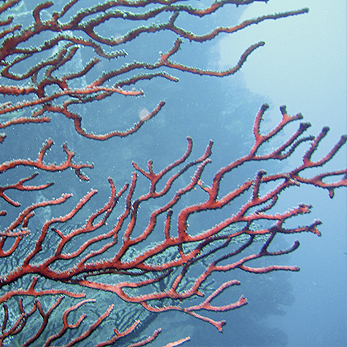EcoQOs provide an indicator-based assessment approach in Region II
The system of EcoQOs for the North Sea, developed by OSPAR in collaboration with ICES, defines the desired qualities of selected components of marine ecosystems in relation to human pressures. The EcoQOs set objectives for specified indicators and provide a means to measure progress. Collectively, EcoQOs are intended to provide comprehensive coverage of ecosystems and the pressures acting upon them, such that meeting all EcoQOs should provide the evidence that the ecosystem is in a good state. Where EcoQOs are not met, OSPAR should investigate the reasons for this and, where appropriate, should consider measures to regulate the relevant human activities.
Evaluation of the initial set of EcoQOs used in the North Sea shows that the objectives set have mostly not yet been achieved and that continued efforts are needed to improve the quality of the North Sea Table 11.2. There are, however, signs that the impacts of tributyltin (TBT) and oil on marine life and the contamination of seabird eggs with chemicals have been decreasing. Some important commercial fish stocks for which reference levels have been set continue to be beyond safe limits, but the size composition of demersal fish communities has been improving, although the desired objective has not yet been reached. Litter in the marine environment is still a concern as indicated by the amount of plastic found in fulmar stomachs. By-catch of harbour porpoises is still high and the data are insufficient to assess whether the EcoQO is met.
The set of EcoQOs, developed for the North Sea, is not yet considered comprehensive. Most EcoQOs link to specific human activities, such as shipping (oil at sea), litter and fishing, and some link with established assessment approaches by evaluating adverse effects from hazardous substances and excess nutrients. Some EcoQOs indicate the health status of ecosystem components more generally, such as the EcoQO for seal populations. The experience from applying EcoQOs points to the need for consistent implementation across Region II and the need for improvements in quality assurance and data management. The EcoQOs have also provided a focus for discussions with stakeholders on the management of the North Sea. Examples include the EcoQO on oiled guillemots which was a focus for governmental cooperation with coastal communities, bird rescue centres and volunteers in handling oiled birds in the case of oil spills. In the Netherlands, the EcoQO on plastic particles in seabird stomachs has been used to evaluate efficiency of port waste reception facilities.
OSPAR needs to develop the EcoQO system further to provide more comprehensive coverage of ecosystem components and pressures. Additional EcoQOs are already under development on seabird populations, threatened and/or declining habitats and marine beach litter. A more complete system would strengthen overall assessments of the North Sea status. Development of EcoQOs that can be applied in other OSPAR Regions may require the adaptation of the North Sea EcoQOs (e.g. use of more regionally appropriate species). Experience in expanding the application of EcoQOs to other OSPAR Regions has already been gained for TBT and eutrophication, through the development of assessment criteria which can be applied in all OSPAR Regions. The indicator on which the large fish EcoQO is based has also been trialled in other OSPAR Regions in addition to the North Sea.
OSPAR’s concept of EcoQOs has supported the selection of indicators for measuring progress toward good environmental status under the EU Marine Strategy Framework Directive and should continue to support the development of a comprehensive set of criteria for good environmental status under the Directive. The aim must be to have a common set of indicators, regionally bespoke where appropriate (e.g. regionally appropriate species or assessment criteria), enabling a comparable judgement of good environmental status across the OSPAR area.
Summary of current status of the North Sea...
PDF

